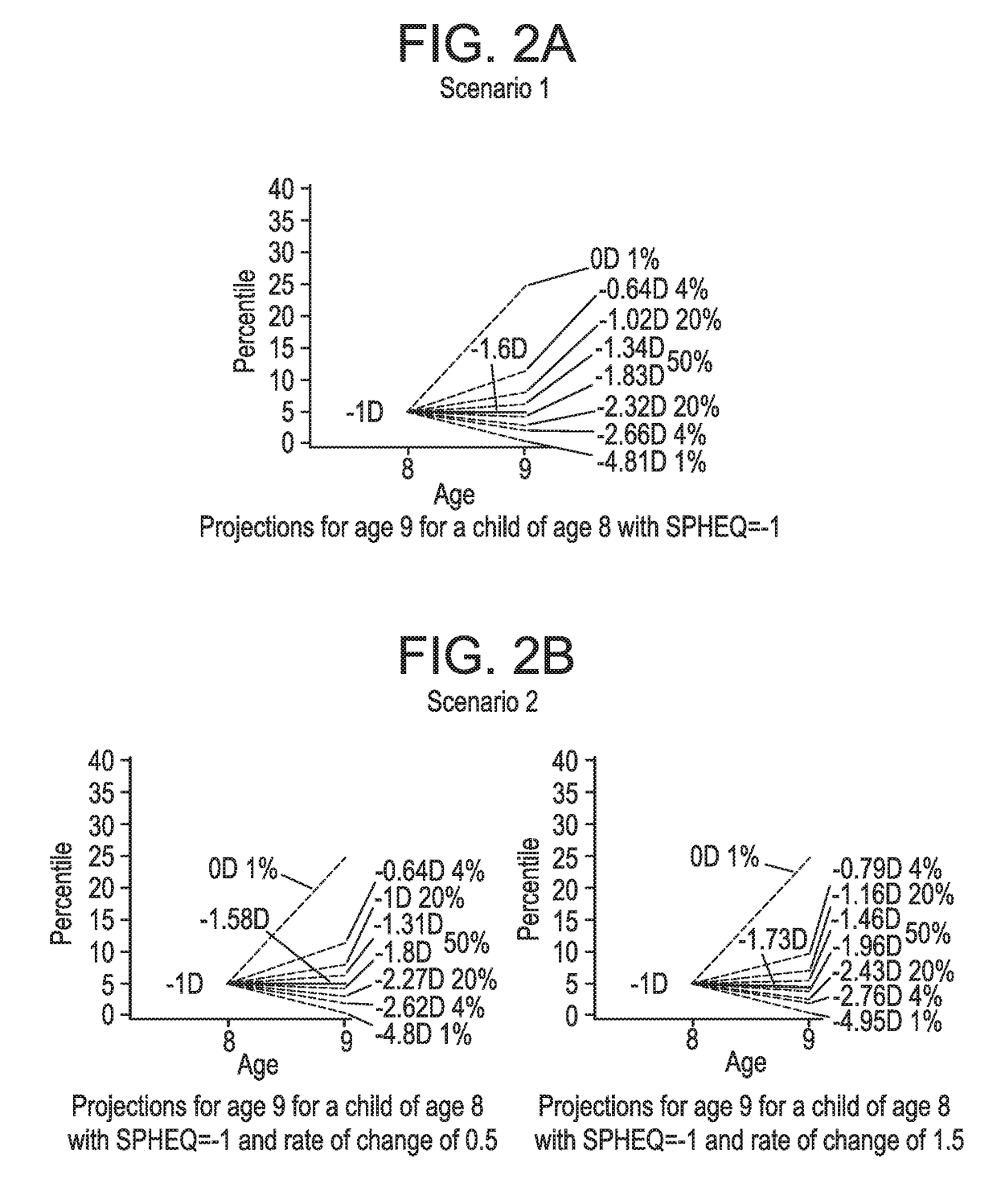Ametropia treatment tracking methods and system
a technology for ametropia and tracking methods, applied in the field of ametropia treatment tracking methods and systems, can solve the problems of hyperopia, eye growth the growth of eye is not long enough, so as to slow down the progression of myopia
- Summary
- Abstract
- Description
- Claims
- Application Information
AI Technical Summary
Benefits of technology
Problems solved by technology
Method used
Image
Examples
Embodiment Construction
[0032]The present invention relates to methods and a system for ametropia tracking, and more particularly, for myopia treatment tracking. The tracking methods and system estimate a potential refractive error of an individual over a future predetermined period of time relative to reference population, which 1) allow ECPs to predict and track refractive progression as well as demonstrate and track the effectiveness of treatments to slow the progression of myopia and / or 2) allow patients or parents to understand the long-term benefit of a myopia control treatment.
[0033]Although the discussion below is directed to myopia, the present invention is not so limited and could be applied to other refractive errors, such as hyperopia or astigmatism. In addition, the discussion below is directed to tracking methods for individuals, in particular children having an approximate age of 6 to 14. However, the tracking methods could also be applied to younger children, older adolescents, or young adu...
PUM
 Login to View More
Login to View More Abstract
Description
Claims
Application Information
 Login to View More
Login to View More - R&D
- Intellectual Property
- Life Sciences
- Materials
- Tech Scout
- Unparalleled Data Quality
- Higher Quality Content
- 60% Fewer Hallucinations
Browse by: Latest US Patents, China's latest patents, Technical Efficacy Thesaurus, Application Domain, Technology Topic, Popular Technical Reports.
© 2025 PatSnap. All rights reserved.Legal|Privacy policy|Modern Slavery Act Transparency Statement|Sitemap|About US| Contact US: help@patsnap.com



